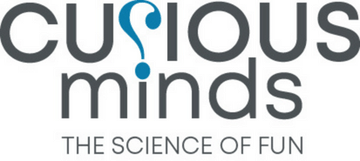What is the Periodic Table? A Comprehensive Guide to the Building Blocks of Chemistry
The periodic table stands as one of the most iconic and indispensable tools in the realm of chemistry. Its organised arrangement of elements provides scientists with invaluable insights into the properties and behaviours of matter.
But what exactly is the periodic table, who devised it, and what purpose does it serve?
In 1869, a Russian chemist named Dmitri Mendeleev, conducted an extensive range of experiments using the known elements and achieved the monumental feat of organising these known elements into a systematic framework. His creation, known as the periodic table, revolutionized the study of chemistry and laid the groundwork for our modern understanding of the elements.
Mendeleev's original periodic table comprised 63 elements, arranged by increasing atomic mass. This table served as a blueprint for understanding the relationships between different elements and predicting the properties of undiscovered elements. Some of the elements detailed in Mendeleev's table include hydrogen, oxygen, iron, and gold, among others.
Structure of the Periodic Table
The periodic table is structured into rows and columns, each serving a distinct purpose in organising the elements. Rows, known as periods, indicate the number of electron shells present in the atoms of the elements. Columns, known as groups or families, denote elements with similar chemical properties and shared characteristics.
Key Groups in the Periodic Table
- Alkali Metals (Group 1): These highly reactive metals include lithium, sodium, and potassium. They are known for their tendency to form alkaline solutions when reacting with water.
- Alkaline Earth Metals (Group 2): Metals such as magnesium, calcium, and barium belong to this group. They are less reactive than alkali metals but still exhibit notable chemical activity.
- Transition Metals: Found in Groups 3 to 12, transition metals are characterized by their variable oxidation states and ability to form colorful compounds. Examples include iron, copper, and zinc.
- Halogens (Group 17): Comprising elements such as fluorine, chlorine, and iodine, halogens are highly reactive nonmetals that readily form salts with metals.
- Noble Gases (Group 18): These inert gases, including helium, neon, and argon, have complete electron shells and exhibit minimal reactivity under normal conditions.
What is An Atom?
Atoms are the individual building blocks of all elements, an element is composed of atoms. An atom consists of a nucleus composed of protons and neutrons, surrounded by a cloud of electrons which move in orbitals. Protons carry a positive charge, neutrons are electrically neutral, and electrons bear a negative charge. The number of protons in an atom determines its atomic number, which uniquely identifies the element.
What is Atomic Mass?
The Atomic mass (ma) is simply the average mass of an atom and is expressed in units of kilograms (Kg) or Daltons (Da). Atomic mass is expressed as a multiple of one-twelfth the mass of the carbon-12 atom, 1.992646547 × 10−23 gram, which is assigned an atomic mass of 12 units
What are Isotopes?
Isotopes are variants of an element that have the same number of protons but different numbers of neutrons. This results in isotopes having slightly different atomic masses. For instance, carbon-12 and carbon-14 are isotopes of carbon, with atomic masses of approximately 12 and 14 atomic mass units, respectively.
The periodic table is such an important means of cataloguing and illustrating the elements and offers a structured framework for understanding the elements and their properties. From Mendeleev's ground breaking design to its evolution into the comprehensive tool we use today, the periodic table continues to inspire curiosity and exploration in the fascinating world of chemistry.
Our Address
Curious Minds Science Ltd (Grasshopper Toys)
112 West Princes Street
Helensburgh
Argyll & Bute
G84 8XD
United Kingdom
Phone
+44(0)1436 670806
Refer a Friend. Earn Passive Income!
If you love what we do, and want to earn some passive income, our affiliate scheme is perfect for you. Here's the rundown:
- Sign up to our affiliate scheme using the link below.
- Send your referral link to a friend, or embed the link on your blog, website or social media.
- This link simply takes them to our website, and tells us you sent them there. So we know to pay you and not someone else!
- Once they place an order, you earn a commission equal to 5% of the total order value.




